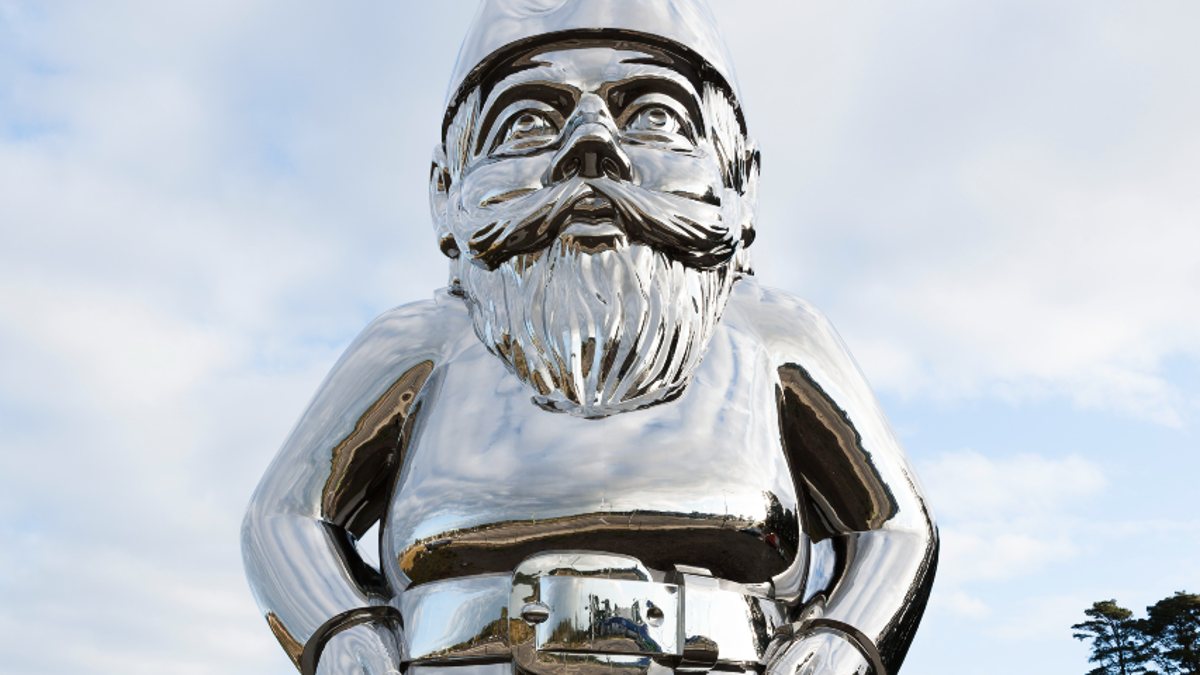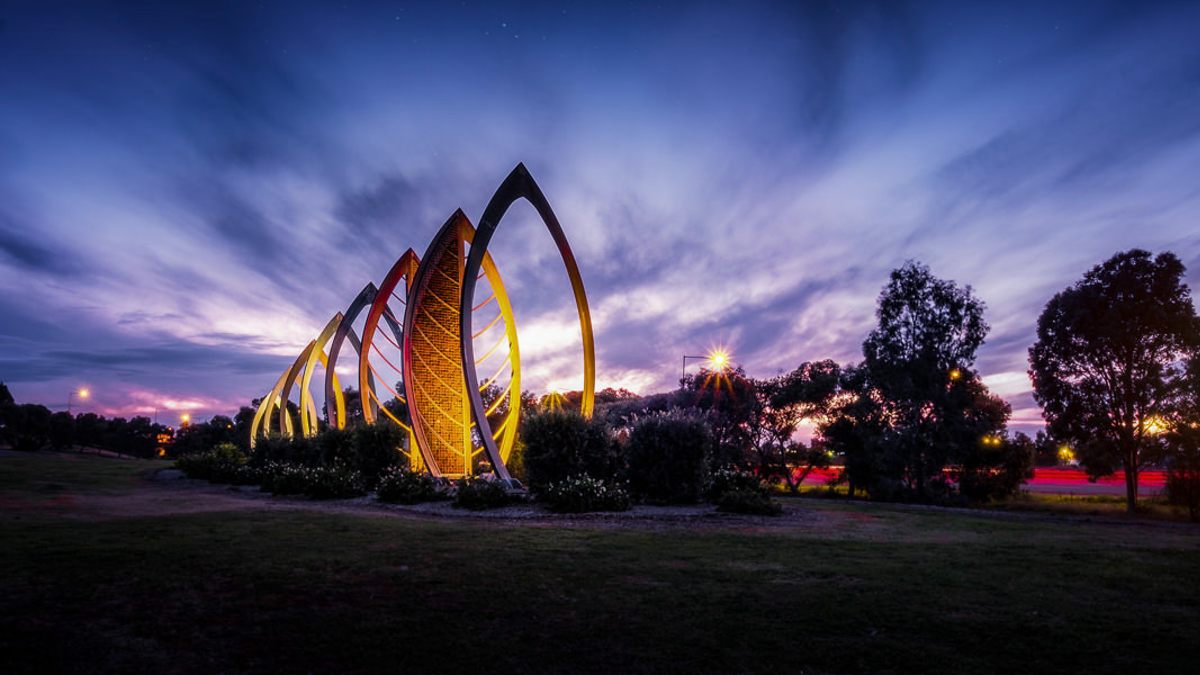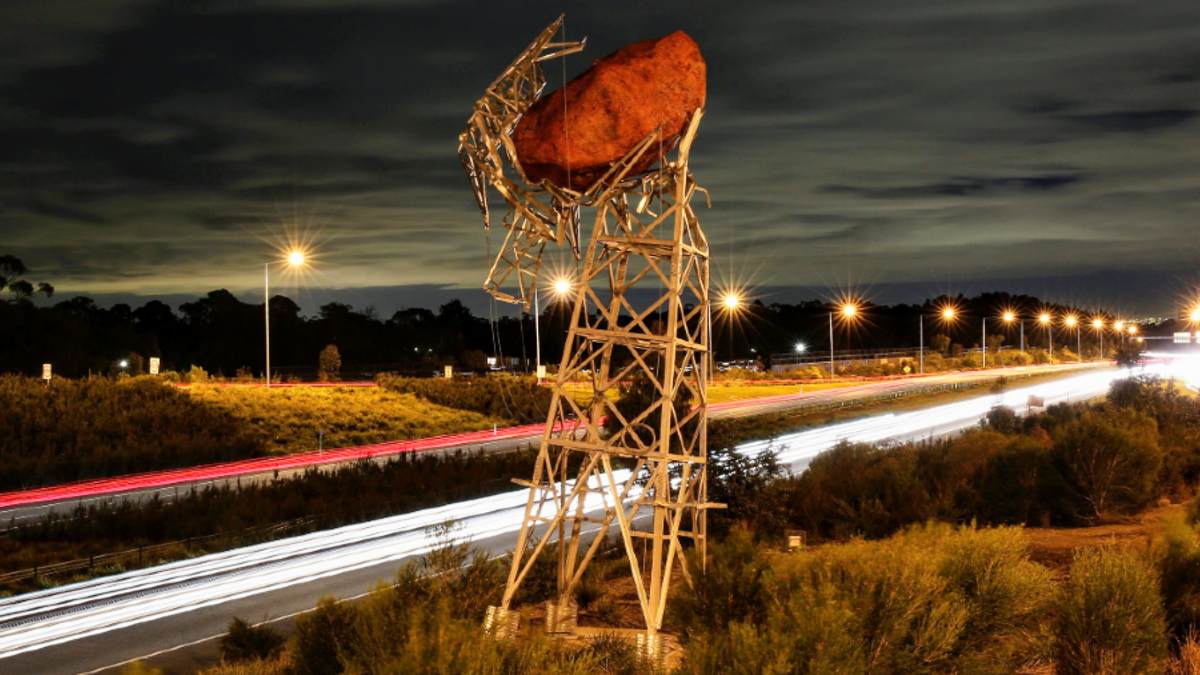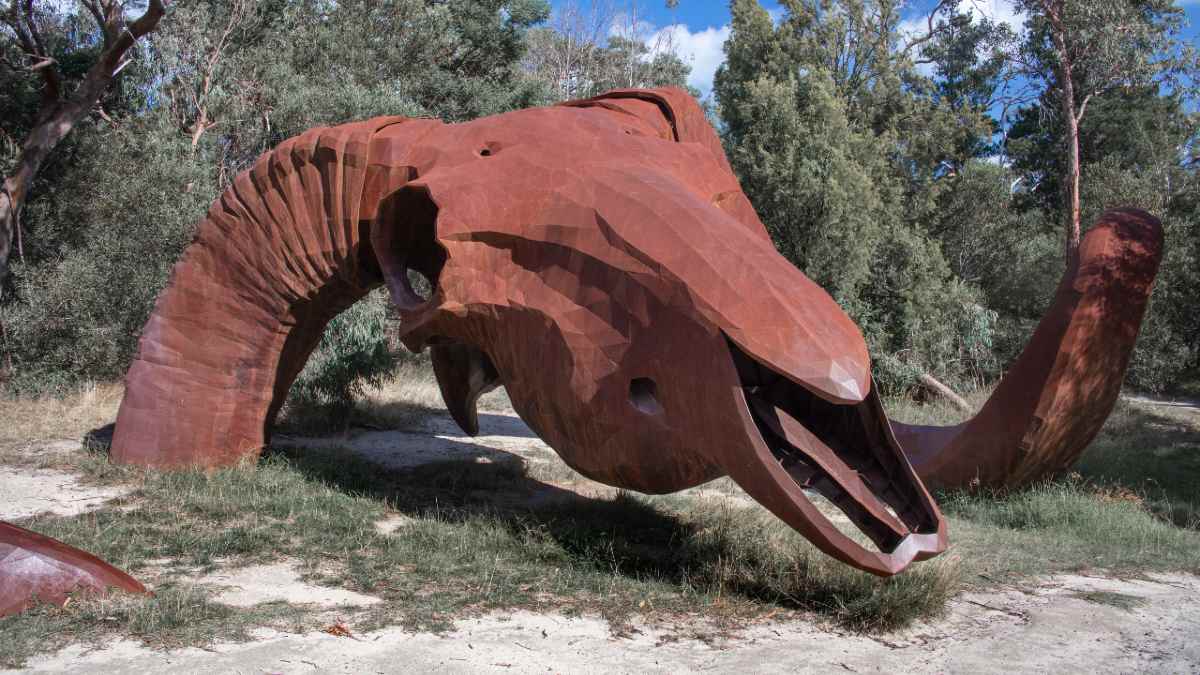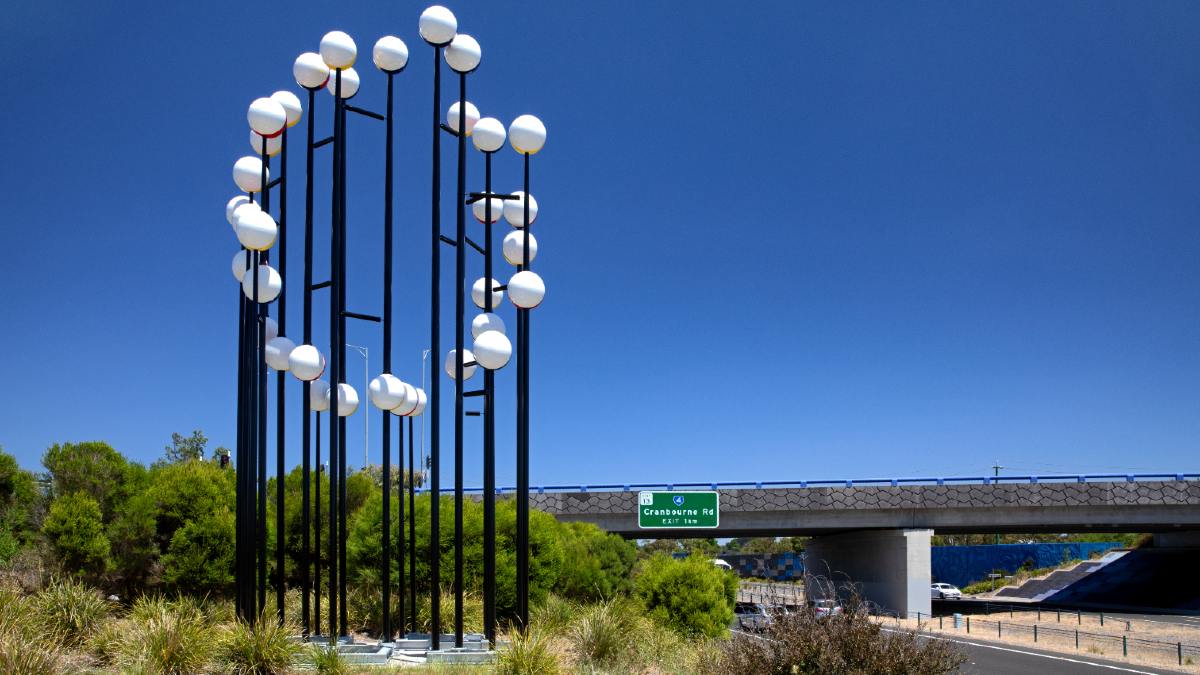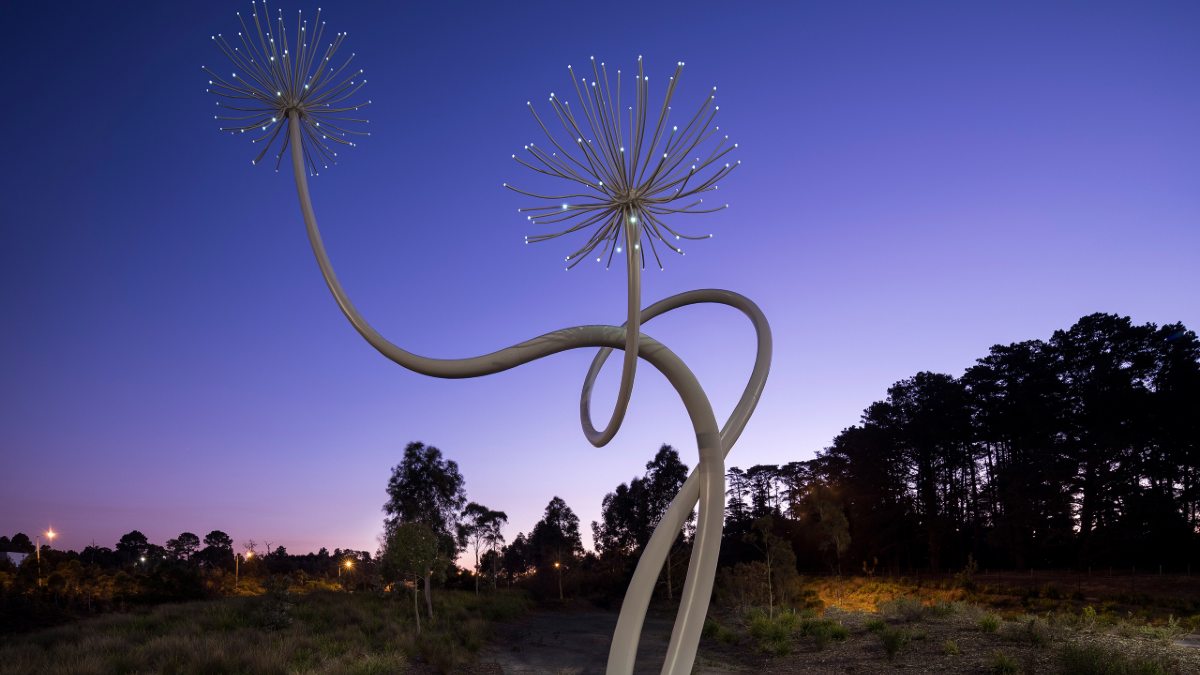Learn what to do when your car breaks down in Victoria, with step-by-step safety tips, what to check, and who to call for help across the state.
Look, don’t stare: how Melbourne's roadside artworks came to be

Big, bold, and sometimes polarising, roadside artworks are dotted throughout Melbourne where they provide community engagement (and a more interesting drive).
A hotel that’s not a hotel; a house suspended in the sky; a giant, shiny silver gnome. These might seem completely unrelated to anyone living outside of Victoria, but if you drive through the metro city and suburbs regularly, you’ll know them as some of the city’s most famous roadside artworks and landmarks.
These (sometimes quirky) roadside artworks have help mould the city’s cultural identity and have created a talking point for motorists and tourists alike.
“It gets people talking about art and how things sit in the landscape – whether or not they think it fits well or doesn't fit so well,” says Lisa Byrne, the Executive Director for McClelland Sculpture Park in Langwarrin.
“I think it really brings art, and the conversations around art in the world around us every day to the forefront.”
Before you hit the road in search of Melbourne's roadside artworks, plan your journey ahead of time and download the arevo app.
Road-ready art
Byrne's role involves working on the Southern Way McClelland Commissions, a project between McClelland Sculpture Park and Southern Way (the private sector company responsible for delivering the Peninsula Link freeway).
Since 2013, the project has been delivering a slew of roadside public artworks along the Peninsula Link, rotating in new works (with old works finding a permanent home at McClelland) every two years in a program that’s expected to run until 2037. When it comes to selecting works for the project – or any roadside artwork – Byrne says the are several factors particular to the medium.
“Cars are going past those works at 100 kilometres an hour,” says Byrne. “We don't want to distract drivers.”
Given the close proximity to the road, such artworks also need to take into account the health and safety regulations of bodies like VicRoads and Public Transport Victoria.
“Works that are very brightly lit or flashing, they aren't able to be considered,” she says. “Text-based works are very difficult for us to even consider because there is that consideration of driver's attention.”
It’s not just the artwork itself that needs to considered, as does the location where the work is installed, walking a thin line between visibility and safety and accounting for everything from the impact of existing vegetation through to road design and expected traffic.
In Melbourne’s west, Wyndham City council has announced a ten-year public art plan, which includes roadside works. Councillor Marcel Mahfoud says that regardless of whether a work is located near a suburban street or next to a freeway, it's important that people can enjoy it while not being unreasonably affected by its installation.
“Our community is our first priority and always at the forefront of any new public art commission, with any work of scale involving a consultative approach to the design and commissioning process,” says Cr Mahfoud. “Placement of artwork is important both visually and culturally.”
Art for (and named by) the public
Compared to a work viewed in a gallery, or even street art viewed on foot, roadside public art can typically only be viewed for mere seconds. That means there’s no accompanying plaque naming or explaining the work, leading to an interesting phenomenon where the works are given unofficial (but widely accepted) monikers by the public.
“People create these affectionate names for them,” Byrne says, adding that the true titles of the works (at least on the Peninsula Link) can be found on the McClelland website. Providing credit and information on roadside works is a challenge that is yet to be solved, with even in-car satellite navigation systems unable to correctly identify the works.
“The sculptures, interestingly, appear on the satnav when you’re approaching them, but there’s no information about them because they’re [satnavs] all owned by different companies,” Byrne says.
It’s not uncommon for the public interest in roadside works to stretch beyond nicknames either, finding life and appreciation on social media and even inspiring some to add to the works themselves. One of the best examples is Gregor Kregar’s ‘Reflective Lullaby’, the nine-metre-tall stainless steel gnome commonly referred to as ‘Frankie’ or ‘Chrome Gnome’ by locals.
“[It] received quite a lot of attention when it was installed,” Byrne says. “It had a Hawthorn cap one year, it reproduced and had many little garden gnomes placed around it at another time.”
In addition to the community engagement they inspire, there’s another, far more obvious benefit to roadside art
“I think it breaks up the motorway journey,” says Byrne. “[It provides] a sense of animating a journey and making a journey more interesting.”

No guests allowed at Callum Morton's Hotel, one of several roadside works along the Eastlink. Photo: Supplied
Roadside art to find in Melbourne
Love Flower, John Meade and Emily Karanikolopoulos
Located at the Peninsula Link’s Cranbourne Road exit
Love Flower replaced Reflective Lullaby when it was removed in 2019. The works is inspired by both the agapanthus flower (the name for which is derived from ‘god’s love’ and ‘flower’) and the Japanese art of flower arranging, known as ikebana. If you drive past the flower in the dark, you might even notice it glows.
Reflective Lullaby, Gregor Kregar
Located at McClelland Sculpture Park, formerly located at the Cranbourne Road exit
The nine-metre-tall silver gnome attracted a substantial fanbase after being installed as part of the Southern Way McClelland Commissions. While it’s no longer a roadside work (it was relocated in 2019), the gnome can still be visited at McClelland Sculpture Park.
Melbourne International Gateway, Denton Corker Marshall
Located on the CityLink approximately between Delhi Reserve and Storage Wetland Park
Melbourne International Gateway might not ring any bells, but you’re almost certainly familiar with this work’s alias. This work is commonly known as the Cheese Stick and Ribcage for its passing resemblance to those objects. The precariously leaning yellow and red rectangular blocks are in fact a nod to Victoria’s gold rush history and its wheat industry.
Hotel, Callum Morton
Located between Greens and Bangholme roads on the Eastlink
Clocking in at 20 metres-high, Callum Morton’s faux hotel can easily fool naïve motorists. But this hotel doesn’t allow any guests and never has. The work sits seemingly in the middle of nowhere, as if a giant hand plucked it out of the CBD and placed it on the side of the Eastlink.
Seeds of Change, Thompson Berril
Located at the Princes Freeway Eastern Interchange
These steel leaves stand ten metres high at their tallest point and were created through a collaboration of artists and an architect, plus community and council consultation. The open leaves (some of which feature panels of basalt rock common in the region) are meant to evoke a gateway, welcoming residents and visitors to the area.
House in the Sky, Brearley Middleton architects
Located at the Western Ring Road interchange
From a distance this work looks very much like someone has picked up a huge pencil and sketched a house mid-air, but the ‘drawing’ was actually created by suspending hot-dipped galvanized steel cables between columns. And although it gives of the illusion of being 3D, House in the Sky is completely two-dimensional.
River Peel, Michael Bellemo and Catriona Macleod
Located Fitzsimmons Lane, Templestowe
Also known as ‘the apple peel’ by locals for its ribbon-like, bright green appearance, this roadside work long sat at the Fitzsimmons Lane and Porter Street roundabout before being rehomed slightly up the road in 2021.
Bunjil, Bruce Armstrong
Located on Wurundjeri Way, Docklands
Those who regularly drive within the Melbourne’s CBD may be familiar with Bunjil, a 25-metre-tall, 20-tonne sculpture inspired by the Kulin nation creator spirit, Bunjil the eagle. The abstract, bird-like sculpture watches over cars on Wurundjeri Way where it has done so (from one position or another – it was moved slightly due to development) since 2002.
